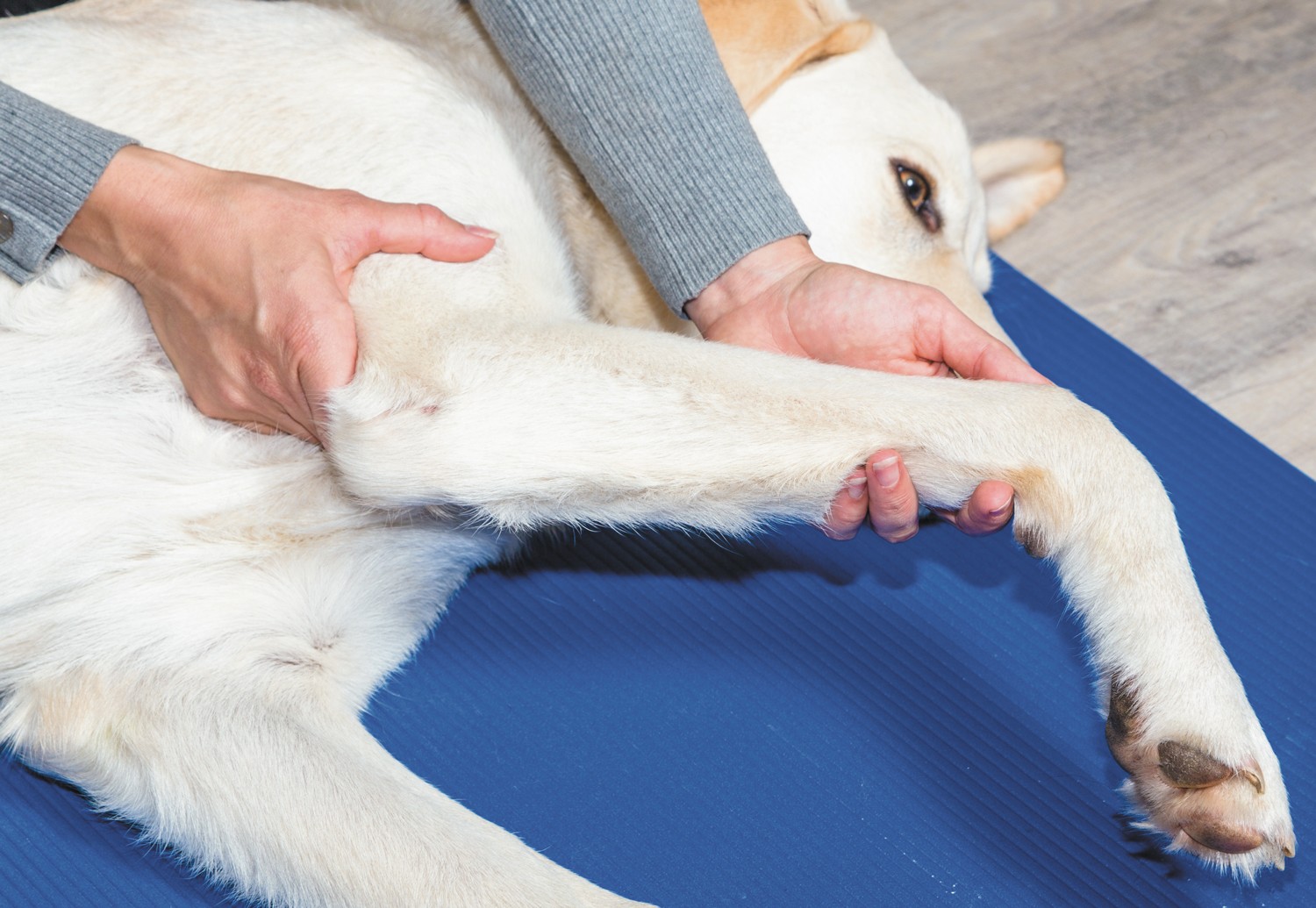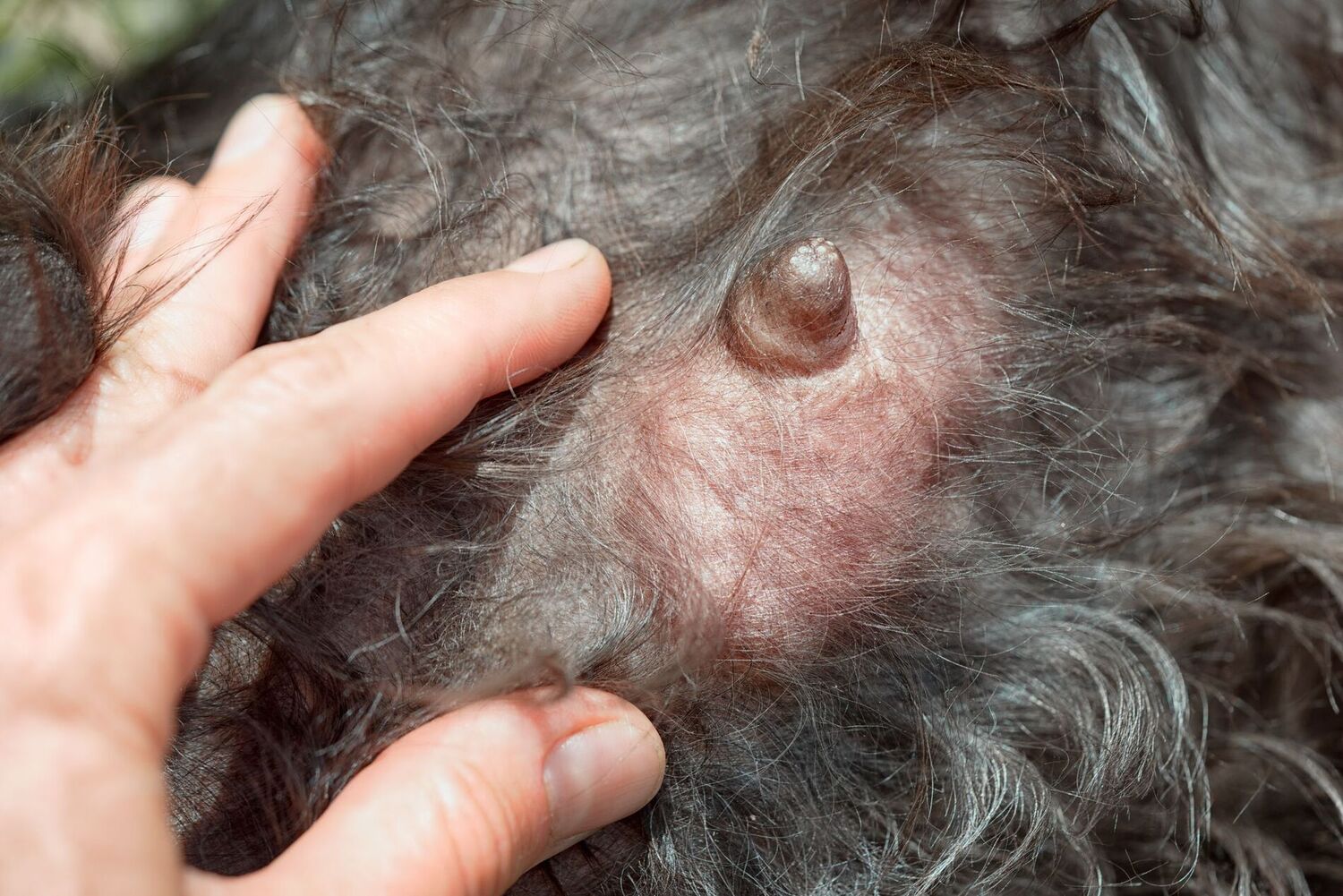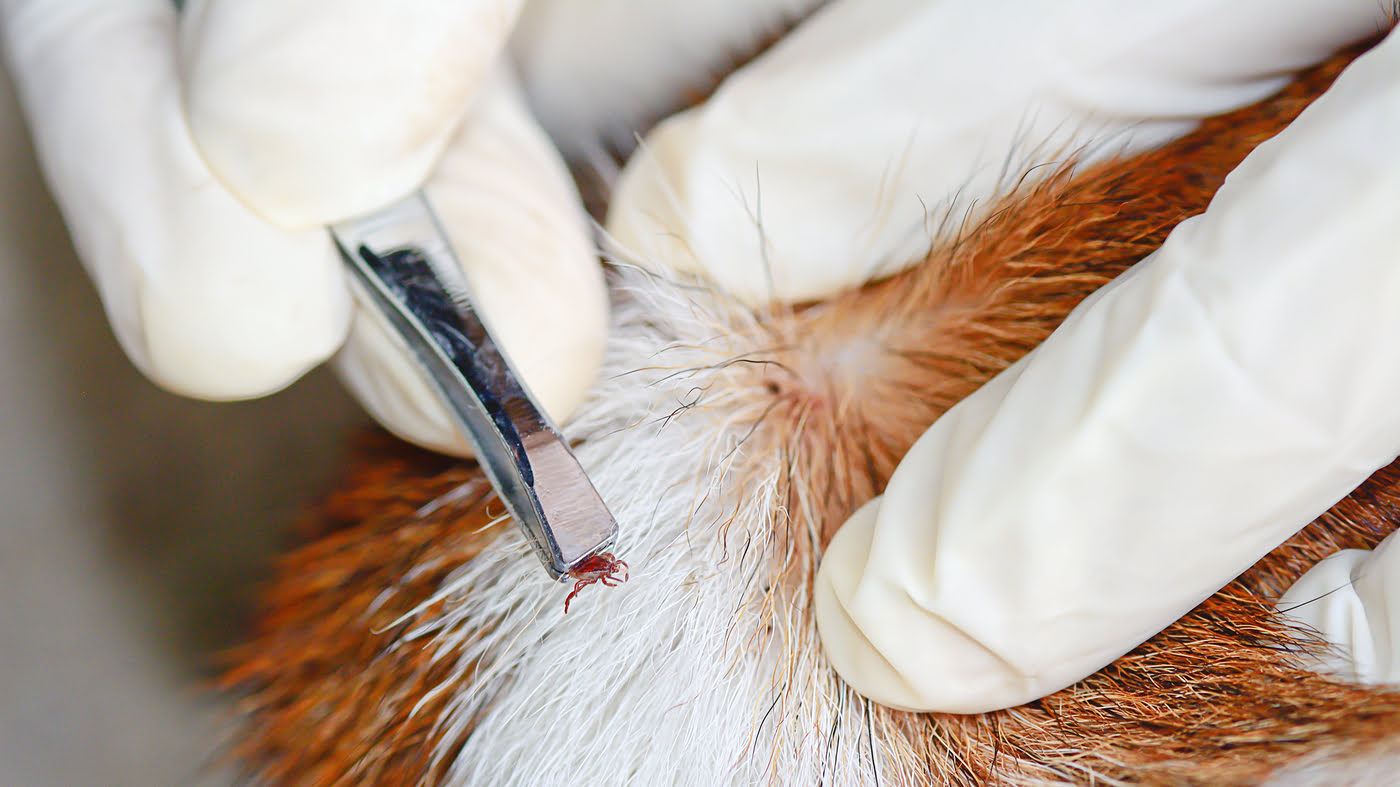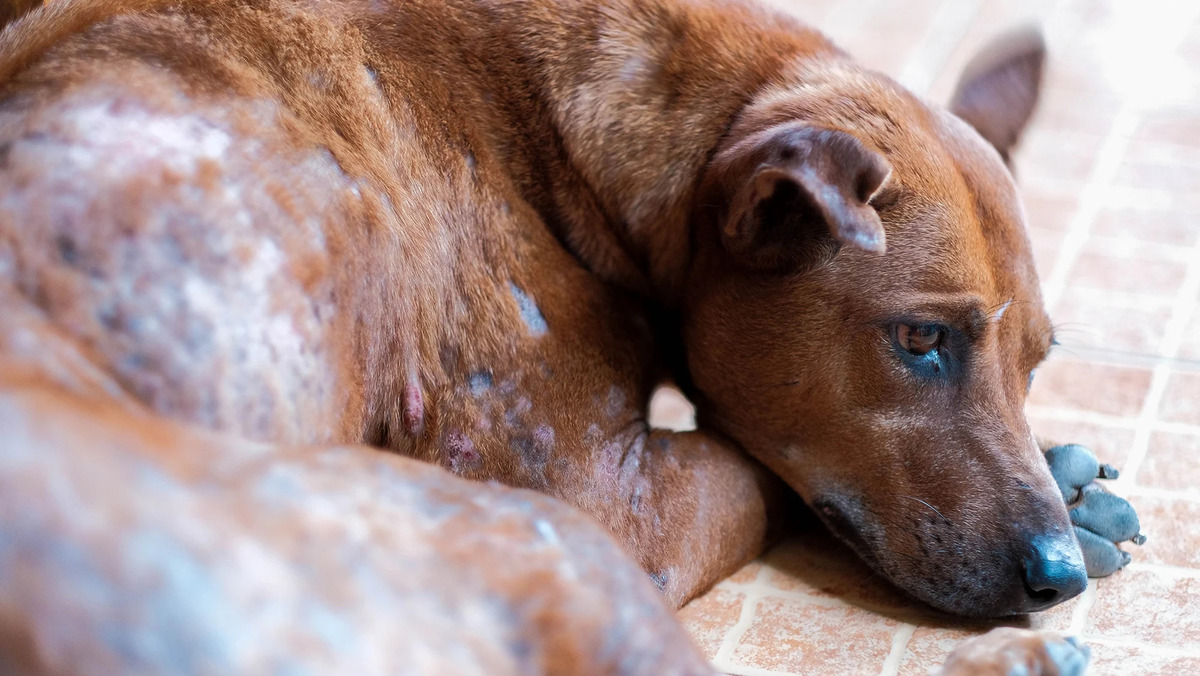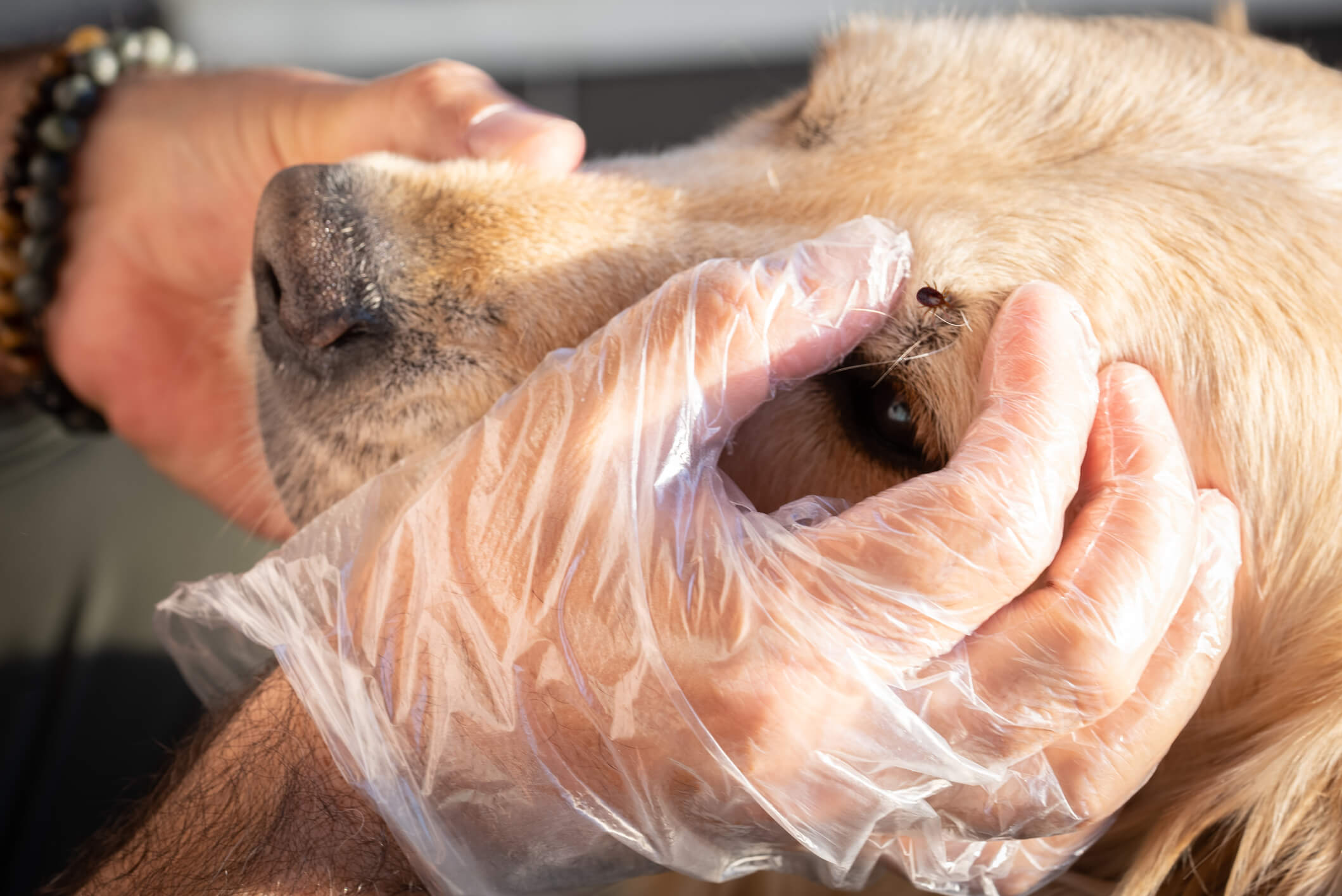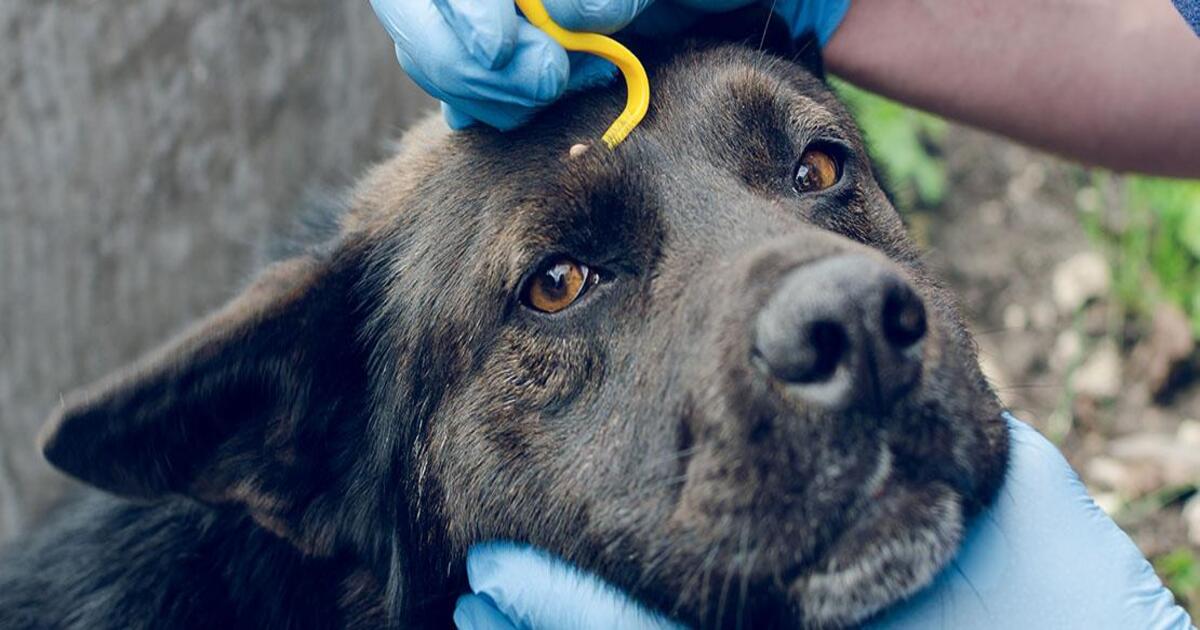Home>Health & Wellness>Common Health Issues>How To Tell If There’s A Tick On Your Dog


Common Health Issues
How To Tell If There’s A Tick On Your Dog
Modified: February 21, 2024
Learn how to identify common health issues in dogs, including how to tell if your dog has a tick and what to do about it. Keep your furry friend healthy and happy!
(Many of the links in this article redirect to a specific reviewed product. Your purchase of these products through affiliate links helps to generate commission for Pawsomeoldies.com, at no extra cost. Learn more)
Table of Contents
Introduction
Ticks are tiny, blood-sucking parasites that can pose a significant threat to the health and well-being of our canine companions. These pesky critters are commonly found in grassy, wooded, and outdoor areas, making it crucial for dog owners to be vigilant in protecting their furry friends from tick infestations.
Understanding the risks associated with ticks on dogs is paramount for ensuring the overall health and happiness of our beloved pets. Ticks are not only a nuisance but also carriers of various diseases, including Lyme disease, ehrlichiosis, anaplasmosis, and Rocky Mountain spotted fever. These illnesses can lead to a range of symptoms, from mild discomfort to severe health complications, making it essential to address tick infestations promptly.
As responsible pet owners, it is our duty to educate ourselves about the signs and symptoms of tick infestations in dogs, as well as the necessary preventive measures and treatment options. By familiarizing ourselves with these crucial aspects, we can effectively safeguard our canine companions from the potential dangers posed by ticks.
In the following sections, we will delve into the various facets of dealing with ticks on dogs, including how to identify a tick infestation, methods for checking dogs for ticks, safe tick removal techniques, and proactive measures for preventing future infestations. Additionally, we will explore the circumstances under which seeking veterinary care for tick-related issues becomes imperative.
By equipping ourselves with the knowledge and tools to combat tick infestations, we can ensure that our furry friends lead healthy, tick-free lives, allowing them to thrive in the great outdoors without the looming threat of these troublesome parasites.
Read more: How To Tell If Your Senior Dog Has Tumors
Understanding the risks of ticks on dogs
Ticks pose a significant risk to the health and well-being of dogs, making it crucial for pet owners to comprehend the potential dangers associated with these blood-sucking parasites. Ticks are not merely a nuisance; they are carriers of various diseases that can have detrimental effects on a dog's health. Understanding these risks is essential for taking proactive measures to protect our furry companions.
One of the most prevalent and concerning diseases transmitted by ticks is Lyme disease. This illness, caused by the bacterium Borrelia burgdorferi, can lead to a range of symptoms in dogs, including fever, lethargy, joint pain, and swollen lymph nodes. If left untreated, Lyme disease can progress to more severe conditions, such as kidney damage and neurological issues, significantly impacting a dog's quality of life.
Ehrlichiosis is another tick-borne disease that can affect dogs. This condition is caused by the Ehrlichia bacteria and can manifest in both acute and chronic forms. Symptoms of ehrlichiosis may include fever, loss of appetite, lethargy, bruising, and bleeding disorders. Without prompt intervention, ehrlichiosis can lead to severe complications, such as organ damage and prolonged illness.
Anaplasmosis is yet another tick-borne disease that can afflict dogs. This illness is caused by the bacterium Anaplasma phagocytophilum and can result in symptoms such as lameness, joint pain, fever, lethargy, and decreased appetite. If left untreated, anaplasmosis can lead to prolonged discomfort and compromise a dog's overall well-being.
Additionally, ticks can transmit Rocky Mountain spotted fever, a potentially life-threatening disease characterized by fever, joint pain, neurological symptoms, and, in severe cases, organ failure. The impact of these tick-borne diseases on a dog's health underscores the critical need to mitigate the risks associated with tick infestations.
By understanding the potential dangers posed by ticks, pet owners can take proactive measures to protect their dogs from these parasites and the diseases they carry. This awareness empowers pet owners to implement preventive strategies, such as regular tick checks, the use of tick repellents, and creating tick-safe environments for their canine companions. Ultimately, by recognizing the risks of ticks on dogs, pet owners can play a pivotal role in safeguarding the health and well-being of their beloved pets.
Signs and symptoms of a tick infestation
Identifying the signs and symptoms of a tick infestation in dogs is crucial for prompt intervention and effective management of these pesky parasites. While ticks themselves may not always be readily visible, certain indicators can point to the presence of these blood-sucking pests on a dog's body. By remaining vigilant and observant, pet owners can detect the early warning signs of a tick infestation and take appropriate action to safeguard their canine companions.
One of the primary signs of a tick infestation is the presence of ticks on the dog's skin. Ticks are often found in areas with less hair, such as the ears, between the toes, around the neck, and in the armpits. Careful inspection of these areas may reveal the presence of ticks attached to the dog's skin. Ticks can vary in size, ranging from as small as a poppy seed to as large as a pea when engorged with blood, making them somewhat challenging to spot. Therefore, thorough and regular checks are essential for detecting these parasites.
In addition to physically finding ticks on the dog, pet owners should be mindful of any unusual behavior or symptoms that could indicate a tick infestation. Dogs infested with ticks may exhibit symptoms such as excessive scratching or licking of certain areas, particularly where ticks tend to attach themselves. Restlessness, irritability, and discomfort can also signal the presence of ticks, as these parasites can cause irritation and discomfort to the dog's skin.
Furthermore, the development of skin irritations, redness, or inflammation at the site of a tick bite can serve as a visible indication of a tick infestation. These skin reactions may result from the tick's saliva, which can trigger allergic reactions in some dogs. It is essential for pet owners to monitor their dog's skin for any signs of irritation or inflammation, as these can be indicative of a tick bite.
Moreover, in cases of severe tick infestations or if the dog has been exposed to disease-carrying ticks, more pronounced symptoms may manifest. These can include fever, lethargy, loss of appetite, and lameness. If a dog displays any of these systemic symptoms, it is crucial to seek veterinary care promptly, as they may indicate the transmission of tick-borne diseases.
By recognizing the signs and symptoms of a tick infestation, pet owners can take proactive measures to address these parasites and mitigate the potential health risks they pose to their dogs. Regular tick checks, prompt removal of any identified ticks, and seeking veterinary care when necessary are essential components of managing tick infestations and safeguarding the well-being of our furry companions.
How to check your dog for ticks
Regularly checking your dog for ticks is a crucial aspect of proactive tick prevention and early detection of infestations. Here's a step-by-step guide on how to effectively check your dog for ticks:
-
Choose a Quiet Environment: Select a calm and quiet environment for the tick check to minimize your dog's movements and facilitate a thorough examination.
-
Gather Necessary Tools: Prepare a pair of fine-tipped tweezers, gloves, and a well-lit area to aid in the inspection process.
-
Begin with the Head and Neck: Start by examining your dog's head and neck, as ticks often attach themselves in these areas. Part the fur and carefully inspect around the ears, under the chin, and along the neck for any signs of ticks.
-
Move to the Body: Proceed to examine the rest of the body, systematically parting the fur and visually scanning for ticks. Pay close attention to areas with less hair, such as the armpits, groin, and between the toes, as ticks prefer these concealed locations.
-
Check Under the Collar and Harness: If your dog wears a collar or harness, ensure to inspect underneath these accessories, as ticks can easily latch onto the fabric and then onto your dog's skin.
-
Inspect Thoroughly: Thoroughly examine your dog's skin, feeling for any unusual bumps or lumps that may indicate the presence of ticks. Ticks can vary in size, so be diligent in your inspection to detect even the smallest parasites.
-
Carefully Remove Any Ticks: If you find a tick, use fine-tipped tweezers to grasp the tick as close to the skin's surface as possible. Gently pull upward with steady, even pressure to ensure the entire tick is removed without leaving any mouthparts behind.
-
Dispose of the Tick: After removing the tick, place it in a container with rubbing alcohol to ensure it is thoroughly killed. Avoid crushing the tick with your fingers, as this can potentially release disease-causing pathogens.
-
Monitor for Symptoms: After the tick check, monitor your dog for any signs of skin irritation, redness, or unusual behavior, as these may indicate a recent tick bite or infestation.
By incorporating regular tick checks into your dog's grooming routine, you can effectively minimize the risk of tick infestations and promptly address any ticks that may have latched onto your canine companion. This proactive approach to tick prevention plays a vital role in safeguarding your dog's health and well-being.
Removing ticks from your dog
When it comes to removing ticks from your dog, it's essential to approach the process with care and precision to ensure the complete and safe extraction of these troublesome parasites. Here's a detailed guide on how to effectively remove ticks from your dog:
-
Gather the Necessary Tools: Before initiating the tick removal process, gather fine-tipped tweezers, gloves, rubbing alcohol, and a container to dispose of the tick.
-
Prepare the Area: Choose a well-lit and calm environment for the tick removal procedure. Minimize distractions and ensure your dog is comfortable and relaxed.
-
Use Fine-Tipped Tweezers: Grasp the tick as close to the skin's surface as possible with the fine-tipped tweezers. Avoid using your fingers, as this can potentially squeeze the tick and release disease-causing pathogens.
-
Apply Steady, Even Pressure: With a firm and steady grip, pull the tick upward in a slow and consistent motion. Avoid twisting or jerking the tweezers, as this can cause the tick's mouthparts to break off and remain embedded in the skin.
-
Ensure Complete Removal: Be thorough in your approach to ensure the entire tick, including its mouthparts, is extracted from your dog's skin. Leaving any part of the tick behind can lead to irritation, infection, or the transmission of disease.
-
Dispose of the Tick: After removing the tick, place it in a container with rubbing alcohol to ensure it is thoroughly killed. Avoid crushing the tick with your fingers, as this can potentially release disease-causing pathogens.
-
Clean the Area: Once the tick is removed, cleanse the area with antiseptic to prevent infection. Monitor the site for any signs of inflammation or irritation in the following days.
-
Monitor for Symptoms: After the tick removal, observe your dog for any signs of discomfort, skin irritation, or unusual behavior. If you notice any concerning symptoms, seek veterinary care promptly.
-
Consider Tick Removal Tools: In addition to fine-tipped tweezers, there are specialized tick removal tools available, such as tick hooks and tick twisters. These tools can provide an alternative and effective means of removing ticks from your dog's skin.
By following these steps and exercising caution throughout the tick removal process, you can ensure the safe and thorough extraction of ticks from your dog. Prompt and proper tick removal is crucial for minimizing the risk of tick-borne diseases and promoting the overall well-being of your canine companion.
Read more: How Can You Tell A Tick From A Mole On A Dog
Preventing ticks on your dog
Preventing ticks on your dog is a proactive and essential aspect of maintaining their health and well-being. By implementing preventive measures, pet owners can significantly reduce the risk of tick infestations and the potential transmission of tick-borne diseases to their canine companions.
One of the most effective methods for preventing ticks on dogs is the use of tick control products. These can include topical treatments, oral medications, tick collars, and tick repellent sprays. These products are designed to repel ticks and prevent them from latching onto the dog's skin. It is crucial to consult with a veterinarian to determine the most suitable tick control product based on the dog's age, health status, and environmental factors.
Regular grooming and maintenance of the dog's coat can also aid in tick prevention. Keeping the dog's fur trimmed and well-groomed can make it easier to spot and remove any ticks that may have attached themselves. Additionally, bathing the dog with tick-repelling shampoos or utilizing grooming products specifically formulated to deter ticks can contribute to a proactive approach to tick prevention.
Creating a tick-safe environment for the dog is paramount in preventing infestations. This involves minimizing the dog's exposure to tick habitats, such as wooded areas, tall grass, and dense vegetation. When venturing into outdoor environments where ticks may be prevalent, it is advisable to keep the dog on well-maintained trails and away from areas with high tick activity. Furthermore, regularly mowing the lawn and removing leaf litter and brush from the yard can help reduce tick populations in the dog's immediate surroundings.
Performing routine tick checks on the dog is an integral part of tick prevention. Regularly inspecting the dog's skin and coat for any signs of ticks allows for early detection and prompt removal of these parasites. Thorough tick checks should be conducted after outdoor activities or outings in areas where ticks are likely to be present.
Lastly, vaccination against tick-borne diseases, where available and recommended by a veterinarian, can provide an additional layer of protection for dogs. Vaccines can help bolster the dog's immune system against specific tick-borne illnesses, reducing the severity of potential infections and mitigating the associated health risks.
By incorporating these preventive measures into a comprehensive tick prevention strategy, pet owners can effectively safeguard their dogs from tick infestations and the potential health complications associated with tick-borne diseases. Proactive tick prevention not only promotes the well-being of our canine companions but also allows them to enjoy a healthier and more fulfilling life free from the burdens of tick-related issues.
When to seek veterinary care for tick-related issues
Seeking veterinary care for tick-related issues is imperative under certain circumstances to ensure the health and well-being of your dog. While proactive measures such as regular tick checks and preventive strategies play a crucial role in managing tick infestations, there are specific scenarios that warrant prompt veterinary attention.
If you discover a tick embedded in your dog's skin and encounter difficulty in safely removing it, seeking veterinary care is recommended. Veterinarians possess the expertise and specialized tools to safely extract ticks, minimizing the risk of leaving behind mouthparts or causing further irritation to the affected area. Additionally, if the tick has been attached for an extended period or is engorged with blood, professional assistance may be necessary to address any potential complications or infections resulting from the prolonged attachment.
Furthermore, if your dog exhibits symptoms of a tick-borne illness, such as fever, lethargy, loss of appetite, lameness, or unusual skin reactions, it is crucial to seek veterinary care promptly. These symptoms may indicate the transmission of a tick-borne disease and require thorough evaluation and diagnostic testing by a veterinarian. Early detection and intervention are vital in managing tick-borne illnesses and preventing the progression of these conditions to more severe health complications.
In cases where your dog has a history of tick infestations or has been exposed to tick habitats with known high activity, regular veterinary check-ups can be beneficial. Veterinarians can conduct comprehensive examinations, recommend appropriate preventive measures, and provide guidance on managing potential tick-related issues. These proactive veterinary visits contribute to the ongoing health management of your dog and aid in preventing and addressing tick infestations effectively.
Additionally, if you have administered tick control products to your dog and observe any adverse reactions or unexpected side effects, consulting a veterinarian is essential. Veterinarians can assess the dog's response to the tick control product, address any concerns, and recommend alternative options if necessary, ensuring the dog's safety and well-being.
By recognizing these circumstances that necessitate veterinary care for tick-related issues, pet owners can prioritize the health of their dogs and take proactive steps to address and manage tick infestations and associated health risks effectively. Veterinary expertise and guidance play a pivotal role in safeguarding the well-being of our canine companions in the face of tick-related challenges.

